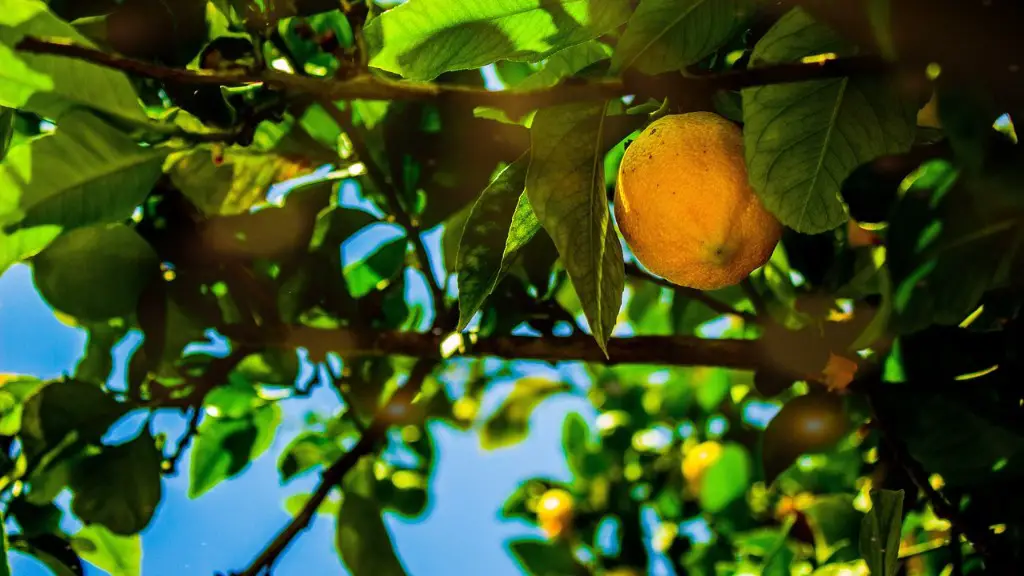Basic Care Instructions
Palm trees are an attractive indoor addition, but many first-time gardeners are unsure how to take care of them properly. Taking care of a palm tree indoors requires regular and careful observation if you want it to thrive. Here are the basics of how to care for your palm tree indoors:
Firstly, you’ll need to ensure that your palm is getting the right amount of sunlight. Most indoor palm trees require bright, indirect sunlight, so you should position your palm near a south or south-east facing window. You should also be aware of heat, as some palms will suffer from too much direct sunlight and become stressed. If in doubt, you can use a light meter to measure the exact light levels.
Secondly, you’ll want to make sure your palm is getting the right amount of water. Palms need to be kept moist but not overly wet. To help you keep the water levels consistent, you should place a saucer full of water under your pot that is large enough for your pot to sink into. It should be easy to check the water levels in the saucer, and you should only add more when the water has been absorbed.
Thirdly, your palm may require some sort of fertilizer or plant food to stay healthy. Many types of commercially available plant food are suitable for palms, so you should have plenty of choice. When fertilizing your palm, remember to follow the instructions provided on the package to get the correct dosage. You’ll also want to give your palm some time to adjust to the fertilizer before giving it more.
Lastly, you’ll also need to watch out for any pests that may try to make your palm their home. The most common pests you might come across include scale insects, mites, and mealybugs. If you notice any of these pests on your palm, you can treat them with a suitable insecticide to get rid of them. It’s also a good idea to check the underside of the leaves regularly to make sure there are no pests.
Temperature and Humidity
Temperature and humidity are important factors when it comes to taking care of indoor palm trees. Ideally, your palm should be kept at an ideal temperature between 65 and 85 degrees Fahrenheit. This temperature range should ensure that your palm is comfortable and can carry out its normal processes. You may also need to adjust the temperature and position of your palm if the ambient air temperature changes drastically.
In addition to temperature, you must also maintain an appropriate level of humidity for your palm. The level of humidity should be around 50 to 60%. You can measure the humidity with a hygrometer, and adjust it with a humidifier or dehumidifier if necessary. You may also need to get the soil in the pot to remain relatively moist by misting it with a spray bottle or by adding a few drops of water each day.
While maintaining the proper temperature and humidity levels is beneficial for the general health of your palm, it’s also important to remember that too much humidity can lead to disease, so you’ll need to be careful not to overdo it.
Potting and Pruning
Repotting is a necessary step when taking care of an indoor palm. The best time to do this is usually in early spring, as this allows the palm plenty of time to acclimatize before winter. When selecting the new pot, make sure it is large enough to accommodate the Palm’s root system, but not too large or the potting mix will become soggy. Along with this, you can also add some fertilizer to the potting mix to help keep the Palm healthy.
Pruning is also another important step when taking care of an indoor palm. The best time to prune is usually in the early summer when the Palm is actively growing. Pruning will help to keep your Palm in shape, and it also prevents it from becoming too top-heavy. When pruning, be sure to remove any dead or damaged leaves and branches, and to cut off any suckers that emerge from the stem. Be sure to always use clean pruning tools to avoid introducing any pests or diseases.
Repotting and Propagation
Repotting is often necessary when taking care of an indoor palm, as it helps to ensure the Palm has access to fresh potting mix and soil. The best time to repot is usually in early spring when the growing season starts. Before repotting, be sure to wean your Palm off of its current potting mix by gradually replacing it with fresh potting mix. You may also choose to propagate your Palm, by taking cuttings of the stem and rooting them in new potting mix.
When Propagating your Palm, you’ll need to take a few extra steps to ensure success. Firstly, you’ll need to choose healthy and undamaged stems for your cuttings. The stems should be at least a few inches in length, and be sure to snip them off just above a node. Once you have your cuttings, you’ll need to dip them in rooting hormone and place them in moist potting mix, such as perlite and peat moss. Keep the potting mix moist and mist the leaves regularly, and in a few months you should see the new roots start to emerge.
Common Diseases and Pests
Even with proper care, it’s possible for an indoor palm to become sick or infested with pests. The most common diseases include root rot fungus, brown jelly fungus and mealy bug. All of these diseases can be treated with suitable fungicidal or insecticidal sprays, so be sure to get the right treatment if you suspect your Palm is affected.
When it comes to pests, the most common ones you may encounter include scale insects, mites and mealybugs. The best way to avoid these pests is by regularly checking the underside of the leaves for any signs of infestation. If you do spot any pests be sure to use a suitable insecticide to get rid of them. Finally, be sure to avoid over-watering your Palm, as this can create the perfect environment for pests and diseases.
Tips for a Healthy Palm
Here are a few tips for keeping your Palm healthy: Firstly, be sure to pick the right pot for your Palm. The pot should be large enough to accommodate the Palm’s root system, but not too large or the potting mix will become soggy. Secondly, make sure to use fresh potting mix when repotting your Palm. Finally, it’s important to regularly check your Palm for signs of disease or pests, and be sure to treat any problems quickly.
Protection from Extreme Weather Conditions
Your indoor palm may need some protection from extreme weather conditions, such as strong winds, cold spells and dramatic temperature changes. If the temperature drops too low, you can wrap the pot in bubble wrap or a blanket to insulate it. You can also add layers of mulch or compost around the base of the pot to protect it from frost. For strong winds, you can place the pot inside a shed or garage, or move it to a sheltered area of your home.
To protect your palm from extreme temperatures, you should keep it in a spot that is away from direct sunlight, heaters, and air-conditioning units. You should also be aware of humidity, as too much or too little can have an adverse effect on your palm’s health.
Regular Maintenance
Regular maintenance is key to keeping your palm tree healthy. This includes things like checking the water levels and pruning the leaves, as well as making sure your palm is in the right spot with the right lighting and humidity. You should also check for pests periodically, but remember not to over-water your palm as this can cause it to become stressed and susceptible to disease.
Finally, you should be aware of the signs of a healthy palm. A healthy palm will have light green leaves that are not wilted or discolored, and its roots should be firm and healthy. If you notice any of these signs, chances are your palm is doing well.



